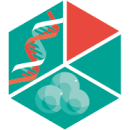Achieving high-titer rAAV production with significantly reduced encapsidated host cell DNA
Cell & Gene Therapy Insights 2025; 11(5), 621–633
DOI: 10.18609/cgti.2025.072
The focus in adeno-associated virus (AAV)-based gene therapy manufacturing is shifting from ultra-rare and rare diseases to more prevalent diseases, resulting in increased demand for scalable AAV vector production. This change underscores the need for efficient manufacturing platforms and the adoption of innovative technologies such as engineered cell lines. This article explores engineered cell lines and their potential to enable higher productivity and reduce impurities, ultimately enhancing scalability and vector quality in AAV manufacturing. Four case studies explore the performance, scalability, and quality of AAV production using transient cell lines, including growth characteristics, vector productivity, bioreactor scale-up, and strategies to reduce encapsidated host cell DNA (ehcDNA) without compromising viral titers.
